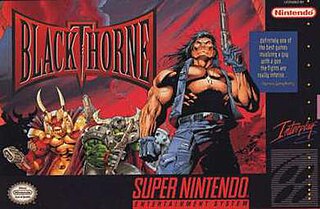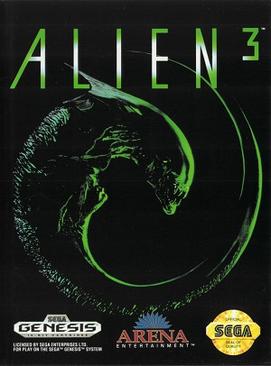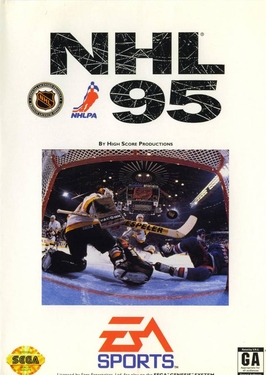
Earthworm Jim is a 1994 run and gun platform game developed by Shiny Entertainment, featuring an earthworm named Jim, who wears a robotic suit and battles the forces of evil. The game was released for the Sega Genesis and Super Nintendo Entertainment System, before being subsequently ported to a number of other video game consoles.

Blackthorne is a cinematic platform game developed by Blizzard Entertainment. It was released for the Super NES and MS-DOS in 1994. The cover art for the SNES version was drawn by Jim Lee. The following year, Blackthorne was released for the Sega 32X with additional content. In 2013, Blizzard released the game for free on their Battle.net PC client. In celebration of the company's 30th anniversary, Blackthorne was re-released for Nintendo Switch, PlayStation 4, Windows, and Xbox One as part of the Blizzard Arcade Collection in February 2021.

NBA Jam is a basketball video game developed and published by Midway for arcades in 1993. It is the first entry in the NBA Jam series. The project leader for this game was Mark Turmell.

Super Street Fighter II: The New Challengers is a competitive fighting game produced by Capcom and originally released as an arcade game in 1993. It is the fourth game in the Street Fighter II sub-series of Street Fighter games, following Street Fighter II: Hyper Fighting. It refines and balances the existing character roster from the previous versions, and introduces four new characters. It is the first game on Capcom's CP System II hardware, with more sophisticated graphics and audio over the original CP System hardware used in previous versions of Street Fighter II.

Mortal Kombat II is a fighting game originally produced by Midway for the arcades in 1993. It was ported to multiple home systems, including MS-DOS, Amiga, Game Boy, Game Gear, Sega Genesis, 32X, Sega Saturn, Super Nintendo Entertainment System, and PlayStation only in Japan, mostly in licensed versions developed by Probe Software and Sculptured Software and published by Acclaim Entertainment.

Ballz is a two-player 2.5D action fighting video game for the Sega Mega Drive/Genesis, the Super NES (SNES) and the 3DO. It was developed by PF.Magic and published by Accolade in 1994. The 3DO version was released as a director's cut in 1995. Ballz offered three difficulty levels over a total of 21 matches. Its distinguishing quality was that each of the characters were composed completely of spheres, granting a pseudo-3D look.

Michael Jordan: Chaos in the Windy City is a side-scrolling action video game developed by Electronic Arts and published by Ocean for the Super Nintendo Entertainment System. The game was released in North America on November 21, 1994 and in Europe on March 11, 1995. A Sega Genesis version was planned, but never released.

Spider-Man and Venom: Maximum Carnage is a side-scrolling beat 'em up game for the Super Nintendo Entertainment System and Mega Drive/Genesis, developed by Software Creations and published by Acclaim Entertainment and its subsidiary LJN in 1994. The game, based on the comic book story arc of the same name, features numerous heroes, including Spider-Man, Venom, and their allies from the Marvel Comics fictional universe like Captain America, Black Cat, Iron Fist, Cloak and Dagger, Deathlok, Morbius and Firestar, all teaming up to battle an onslaught of villains led by Carnage, including Shriek, Doppelganger, Demogoblin and Carrion.

Disney's The Jungle Book is a series of platform video games based on the 1967 Disney animated film of the same name. The game was released by Virgin Interactive Entertainment in 1994 for the Game Boy, Nintendo Entertainment System, Master System, Genesis/Mega Drive, Game Gear, Super Nintendo Entertainment System, and MS-DOS. While gameplay is the same on all versions, technological differences between the systems forced changes – in some case drastic – in level design, resulting in six fairly different versions of the 'same' game. This article is largely based upon the Genesis version.

The Lion King is a platform game based on Disney's 1994 animated film The Lion King. The game was developed by Westwood Studios and published by Virgin Interactive Entertainment for the Super NES and Genesis in 1994, and was ported to MS-DOS, Amiga, Game Gear, Master System, and Nintendo Entertainment System. The Amiga, Master System, and NES versions were only released in the PAL region. It is the final licensed NES game worldwide. The game follows Simba's journey from a young cub to the battle with his uncle Scar as an adult.

Alien 3 is a run and gun game based on the 1992 film of the same name. It was released for the Genesis and Amiga in 1992, then for the Commodore 64, Game Boy, Game Gear, Nintendo Entertainment System, Super Nintendo Entertainment System, and Master System.

Waterworld is a series of video games released for the Super Nintendo Entertainment System, Virtual Boy, MS-DOS, Microsoft Windows and Game Boy, based on the film of the same name, along with unpublished versions for the Mega Drive/Genesis, Sega Saturn, Atari Jaguar, 3DO and PlayStation. These games were produced by Ocean Software. The SNES and Game Boy games were released only in Europe in 1995 and the Virtual Boy game was released exclusively in North America in November 1995. It was released for PC in 1997. The game received widespread negative reviews and the version released for the Virtual Boy is generally considered to be the worst game of its 22 releases.

NHL 95 is an ice hockey video game developed by Electronic Arts Canada. It was released in 1994 for the Super Nintendo Entertainment System and the Sega Genesis. The team rosters and player attributes in the game reflect that of the 1994–95 season.

Mighty Morphin Power Rangers is the title of five different video games based on the first season of the television series of the same name, one for each of the following game platforms: Sega Genesis/Mega Drive, Super Nintendo Entertainment System, Game Boy, Game Gear, and Sega CD. The Nintendo versions of the game were released by Bandai, while the Sega versions were published by Banpresto, a pseudonym of Bandai. The Green Ranger is only playable on the Genesis and Game Gear versions of the game.

Dragon: The Bruce Lee Story is a fighting video game developed and originally published by Virgin Interactive Entertainment in Europe for the Sega Genesis in June 1994. It is based on the 1993 film of the same name, which is a semi-fictionalized account of the life of Hong Kong-American actor and martial artist Bruce Lee. Following the events of the movie, players take control of Bruce Lee across several stages that takes places in different time periods of his life and fight against some of his adversaries.

NBA Live 96 is the second installment of the NBA Live video game series published by EA Sports and released on November 30, 1995. The PC and PlayStation covers feature Shaquille O'Neal of the Orlando Magic, while the Super Nintendo Entertainment System, Sega Genesis and European PlayStation box covers feature a photo of the tip-off to Game 1 of the 1995 NBA Finals. PlayStation and PC versions are the first games in the series to feature 3D-rendered courts, allowing for multiple camera angles using EA's "Virtual Stadium" technology, which is also used for FIFA Soccer 96. On-court player graphics remain 2D sprites. It is also the first NBA Live game released for the PlayStation and the only game for the Game Boy. NBA Live 96 is followed by NBA Live 97.

Samurai Shodown, known in Japan as Samurai Spirits, is a fighting game developed and published by SNK for the Neo Geo arcade and home platform. Released in 1993, it is the first installment in the Samurai Shodown series. In contrast to other fighting games at the time, which were set in modern times and focused primarily on hand-to-hand combat, Samurai Shodown is set in feudal-era Japan and was SNK's first arcade fighting game to focus primarily on weapon-based combat.

Mortal Kombat is a 1992 fighting game developed and published by Midway. It is the first entry in the Mortal Kombat series and was subsequently released by Acclaim Entertainment for nearly every home platform at that time. The game focuses on several characters of various intentions who enter a martial arts tournament with worldly consequences. It introduced many key aspects of the Mortal Kombat series, including the unique five-button control scheme and gory finishing moves called Fatalities.

Bubsy 2 is a platform video game, the sequel to Bubsy in Claws Encounters of the Furred Kind, and the second game in the Bubsy series. It was originally released by Accolade in 1994 for the Sega Genesis, Super NES, and Game Boy, and re-released for Windows through Steam on December 17, 2015.

Shaq Fu: A Legend Reborn is a 2018 beat'em up video game developed by Big Deez Productions and published by Mad Dog Games. It is a sequel to Shaq Fu (1994) and it was released for Microsoft Windows, Nintendo Switch, PlayStation 4, and Xbox One in June 2018. Former professional basketball player Shaquille O'Neal reprises his role from the original as the player character. The game received generally negative reviews upon release for all platforms except for the Xbox One version, which received a more mixed response.



















